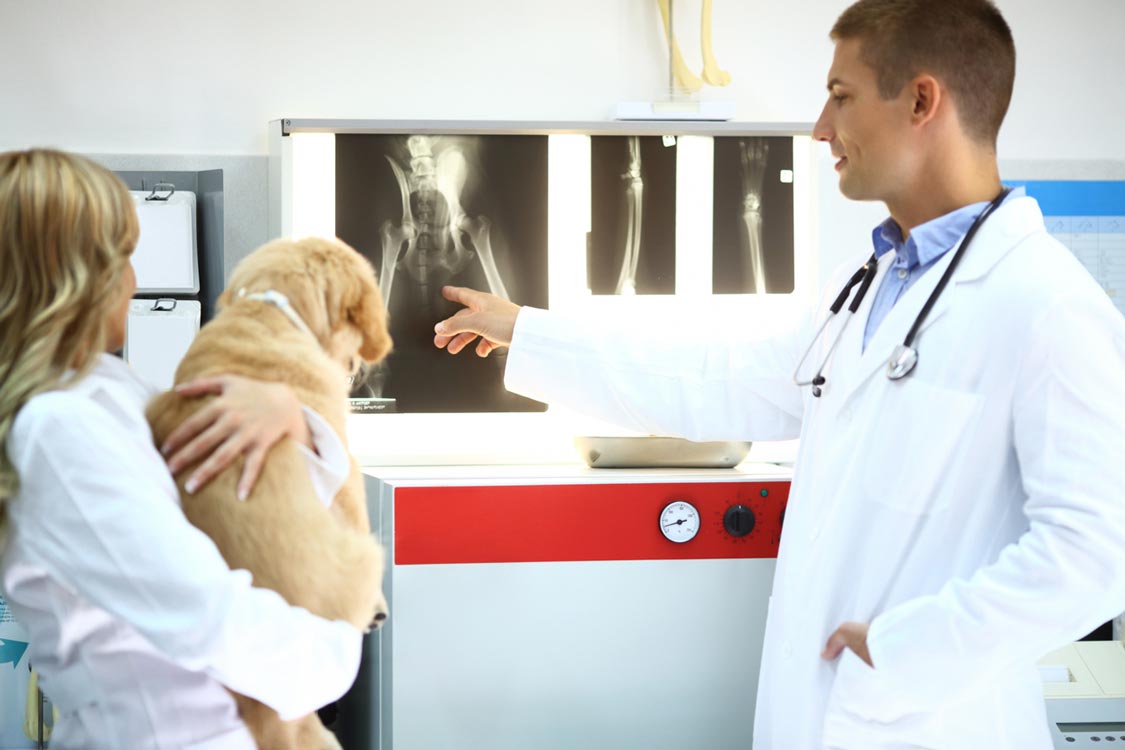X-Rays in Dogs: What Can They Tell Your Vet?

Radiographs (x-rays) are an extremely useful tool for veterinarians who are diagnosing illnesses and injuries in dogs. An x-ray is a type of diagnostic imaging that uses low levels of radiation to produce an image of the dog's skeleton, body cavities, and some soft tissue structures.
How Are X-Rays Done on Dogs?
When a dog needs an x-ray, he is placed on a table and positioned in such a way that the area that the veterinarian is interested in seeing will be targeted by the x-ray beam. Sometimes sedation is necessary because the dog may be too frightened or painful to position properly or the dog's muscles need to be relaxed in order to get the proper view. In order to get a good image, the area of interest is measured to calculate the proper exposure time.
In the past, x-rays were captured on film and developed like pictures. However, many veterinary clinics now have digital x-ray machines, so the image is captured in digital format on a server. This allows x-rays to be done more quickly and to be shared more easily for second opinions.
The amount of radiation used to produce x-rays is considered safe when the procedure is done rarely. However, veterinary staff members who routinely take x-rays must wear protective leaden aprons, gloves, and thyroid protectors as well as special glasses to reduce their exposure to radiation.
What Types of Canine Conditions Can X-Rays Help Diagnose?
X-rays can be useful in aiding in the diagnosis of many conditions in dogs including:
- Bone fractures
- Congenital skeletal conditions like hip dysplasia
- Heart conditions
- Lung problems
- Tooth issues
- Intestinal obstructions
- Some tumors
- Bladder stones
Further diagnostics may be required to definitively diagnose some conditions once x-ray results cause a veterinarian to suspect them. For instance, contrast material can be fed to the dog and then serial x-rays can be taken to monitor the progress of the dye through the intestines, which can help diagnose intestinal obstruction.
X-rays are a low-cost, non-invasive way to gather significant information to aid in diagnosing canine illness and injury.
You May Also Like These Articles:
Fine Needle Aspiration: What Is It and What Does It Tell Your Vet?
Osteosarcoma: Bone Cancer in Dogs
My Dog Has a Lump: What Do I Do?
Don't Ignore This Odd Canine Behavior: Head Pressing
Why Does My Dog Bring Up Food After Eating?
Disclaimer: This website is not intended to replace professional consultation, diagnosis, or treatment by a licensed veterinarian. If you require any veterinary related advice, contact your veterinarian promptly. Information at DogHealth.com is exclusively of a general reference nature. Do not disregard veterinary advice or delay treatment as a result of accessing information at this site. Just Answer is an external service not affiliated with DogHealth.com.


